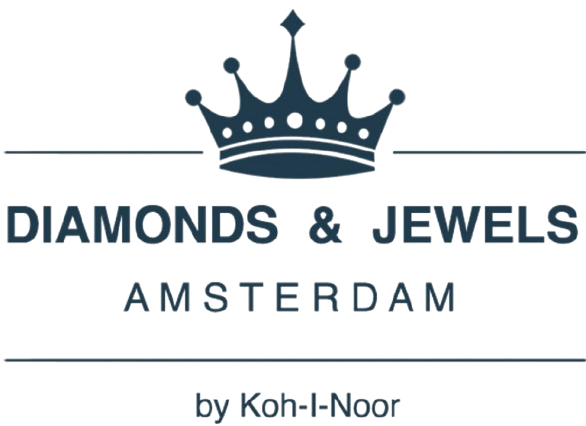
Read on, and delve deeper into the
The 4 C's stand for:
- the cut (Cut)
- the color (Colour)
- the purity (Clarity)
- the carat weight (Caratweight)
The cut:
- Brilliant (round)
- Princess (square)
- Baguette (rectangular)
- Emerald (rectangular with more facets)
- Oval (oval)
- Pear (drop)
- Marquise (ellipse with pointed ends)
The color:
- D River Finest white+
- E River Finest white
- F Top Wesselton Fine white+
- G Top Wesselton Fine white
- H Wesselton White
- I Top Crystal Lightly tinted white+
- J Crystal Lightly tinted white
- K Top Cape Tinted white+
- L Top Cape Tinted white
- M Cape Tinted color
- N Low Cape Tinted color
- O Very Light Yellow Tinted color
- P-Z Light Yellow Tinted color
- LC Loupe Clean Nothing to see
- VVS1 Very Very Small incl. Difficult to see
- VVS2 Very Very Small incl. Difficult to see
- VS1 Very Small inclusion Te zien
- VS2 Very Small inclusion Te zien
- SI1 Small Inclusion Easy to see
- SI2 Small Inclusion Easy to see
- P1 Piqué Can be seen without a magnifying glass
- P2 Piqué Can be seen without a magnifying glass
-
P3 Piqué Can be seen without a magnifying glass
The number of carats indicates the weight of the diamond, 1 carat is 0.2 grams, and 0.10 carats, for example, stands for 0.02 grams. In ancient times there were other dimensions. The seed of the carob tree was used to weigh diamonds. This seed almost always had the same weight, and was therefore reliable enough to use for weighing the precious diamonds. The Latin name of the tree is Ceratonia siliqua, and the fruit was called Keration, hence probably the name carat. So you see, diamonds are from the beginning of time and will last forever.
Our jewelry is all set with natural diamonds. Unlike Labgrown diamonds, natural diamonds rise with the price.Naturally, the diamonds are purchased conflict-free according to the Kimberley Process conditions. During this process, international agreements were made to work with conflict-free diamonds.
This way, the diamonds you buy from us are not only a good investment, but you can also enjoy your purchase with peace of mind!
